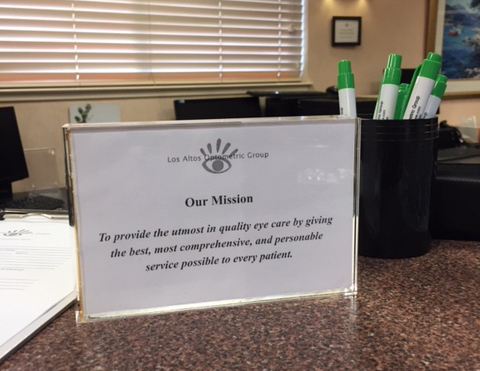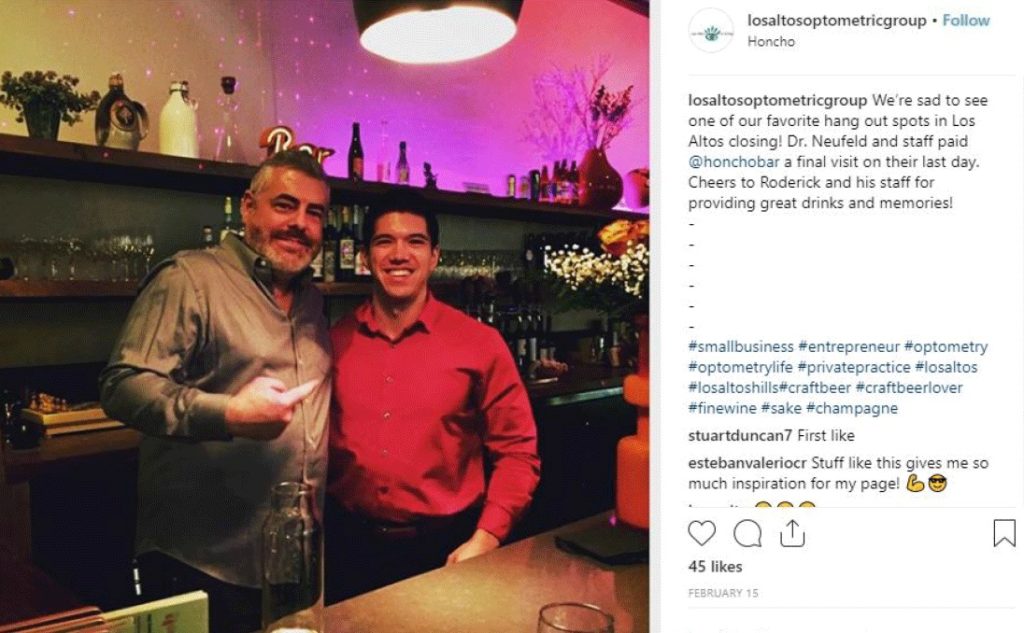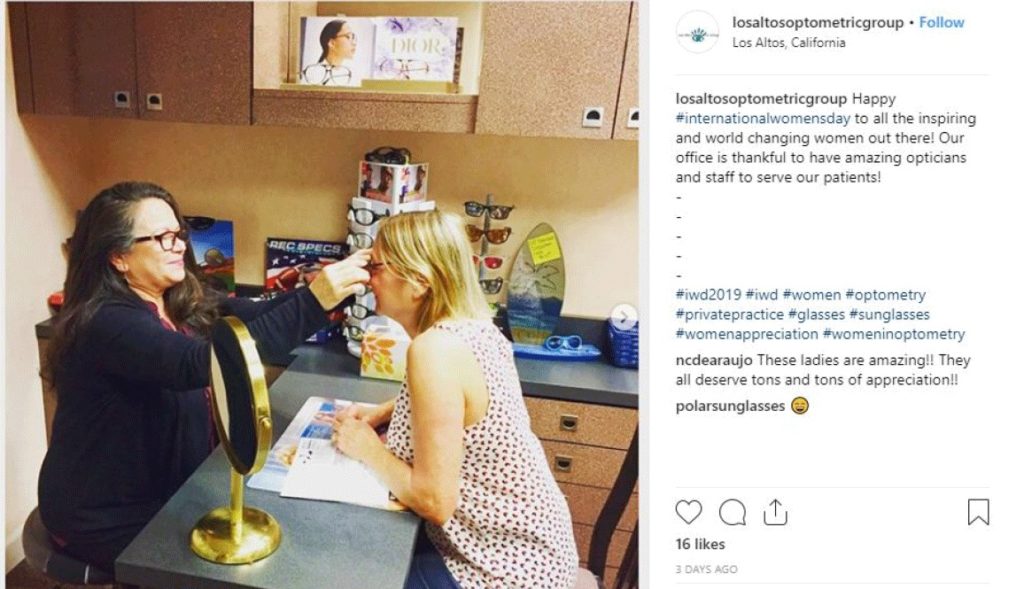By Aaron Neufeld, OD, FAAO

May 22, 2019
Your practice culture perfects, or ruins, the patient experience. Culture refers to the way in which your staff interacts with patients, and the office environment the patient is treated to (or has to endure). Here’s how my practice makes our “culture of excellence” work both for us and our patients to generate return visits and referrals of friends and family.
My practice has grown steadily over the last few years. Today, we see 2,800-3,000 patients per year for annual comprehensive exams.
Figure Your Culture Out Yourself First
The first thing is to start with yourself. Define your culture. It should be contained in your mission statement, and should be a living testimony in your words, thoughts and actions. When you truly feel that you have defined your culture, start teaching your staff.
Welcome to Our “Culture of Excellence”
To me, practice culture starts with the mission statement as the underlying principle behind how we as doctors and staff act both toward our patients and toward each other. Culture is how we can conduct ourselves to create an inviting atmosphere for everyone involved. I often refer to our practice culture as a “culture of excellence.” This completely has to do with the kind of patients we want to attract. The culture of excellence dictates going above and beyond expectations, and providing service that transcends any other eyecare office in our area.
 Empathy is a Key Cultural Component
Empathy is a Key Cultural Component
The biggest element of our practice culture is the ability to empathize with our patients and create a “family” bond. We do this by curating our service to the patient’s needs and wants.
Our opticians, staff and doctors (me included) ensure that ample time is available to truly understand every patient at the individual level. That means that in the exam room, the doctors take the time to get to know the patient well enough to accomplish lifestyle dispensing. We know what the patient’s work and leisure lives are like, and can prescribe the best computer eyewear, the best driving glasses for their long commute and the polarized sunwear they need for their boating hobby. We can also recommend quality-of-life boosters–those little extras that doctors who don’t know their patients well wouldn’t know to recommend, like sports eyewear specialized for the biking the patient likes to do.
In addition, when addressing medical eyecare needs, we can speak with empathy when addressing risk for diseases like macular degeneration and glaucoma, so the patient knows we’re there to help monitor for the development of those conditions, and that, should they be diagnosed with an eye disease, we can compassionately help them manage it.

Dr. Neufeld and his staff provide personalized care as part of the practice’s culture of excellence: “To provide the utmost in quality eye care by giving the best, most comprehensive, and personable service possible to every patient.”
Learn Three Things About Every Patient
As a practitioner, I have made an effort to have patients feel as comfortable as they can with me. A big part of my exam, and a philosophy I tell younger ODs whom I have mentored, is to learn three facts about the patient in your chair that have nothing to do with work or health. By getting to know my patients at a deeper level, I can establish a base which I can use to customize an experience for the patient – I know how to gauge conversation, recommend eyewear and further market to the patient.
I have encouraged my staff to take this approach, too. Every staff member seeks to know our patients at a personal level, whether it be our receptionist or opticians. With this knowledge they can cater an experience that makes the patient feel warm and content while providing for both the patient’s wants and needs.
Learn Culture By Doing
Mission statements on the wall, and reviewed at meetings, are one thing, but to consistently implement a practice culture, it has to be demonstrated in everyday interactions.
Remember, your staff will not learn culture overnight, and culture cannot be taught in a classroom setting. The staff must be reminded of culture not only in frequent office meetings, but also on the floor. Praise them when they demonstrate your culture and gently remind them if they don’t follow your culture. If I see a good example of an employee exemplifying our culture, I will often tell them and the rest of the staff.
Other Articles to Explore
I often review the tenets of our culture in staff meetings, and then link a specific example of employee behavior to that tenet. That way, staff members are not only reminded of the tenets of our culture, but how they can be applied.
Practice, as the word implies, is conscientiously putting our culture into words and actions to benefit patients. This happens anywhere from the front desk to the exam room to the optical. For example, in the optical, our culture requires that each optician talk in depth with patients about their expectations for their new eyewear, including performance and style. The optician knows to talk to the patient about where, and how often, they will be wearing their new glasses, and about what they liked, and didn’t like, about their last pair of glasses. The optician would also need to get a sense of the patient’s personal style, and then talk to the patient about it, while making recommendations that matched that style.
Communicate Your Culture in Your Marketing
Once you and your staff have established culture inside the practice, it is time to market it to the outside world. It might sound like a cliche, but the biggest marketer is your patients. If you truly instill a culture that provides value and encourages growth, then patients will share their experience with others and send more individuals into your practice to experience this culture. Culture can also be placed in marketing materials, whether it be a broad-reaching Facebook post or a personalized thank-you letter.
In our marketing, we try to convey our culture by showing what we can offer the patient, and also how we as an office have a family environment. Marketing materials such as mailings and internet advertisements (social media) communicate the idea of an organization that strives to provide exemplary and personalized service, rather than a bland, corporate experience. We do this by hitting on a personal level with advertisements, often by appealing to emotion, which translates to inherent needs and wants.
Here is an example of our culture communicated in a Facebook post. One of the beloved bars in our downtown area shut down recently. Our whole office decided to give the bar one final visit. We heavily value community involvement in our culture because it allows us exposure and the chance to gain new patients:

Here is another example of our culture expressed in our social media marketing. Our staff and opticians (which all happen to be women) had fun participating in pictures we posted in honor of International Women’s Day. IWD is especially important in the San Francisco Bay Area/Silicon Valley, where we are based, due to the many current movements to get women more involved the tech sector, which is our primary local industry.

 Aaron Neufeld, OD, is the owner of Los Altos Optometric Group in Los Altos, Calif., and co-founder of ODs on Finance. To contact: aneufeldod@gmail.com
Aaron Neufeld, OD, is the owner of Los Altos Optometric Group in Los Altos, Calif., and co-founder of ODs on Finance. To contact: aneufeldod@gmail.com





















